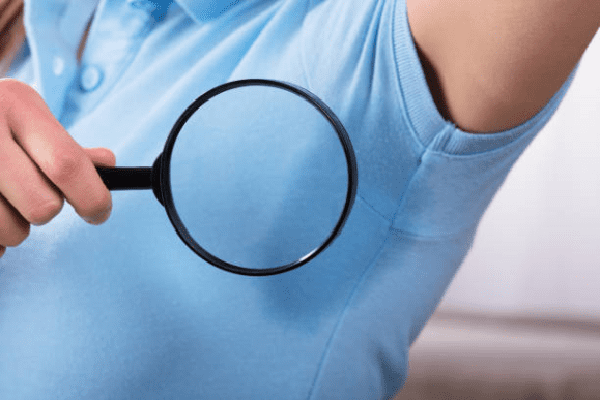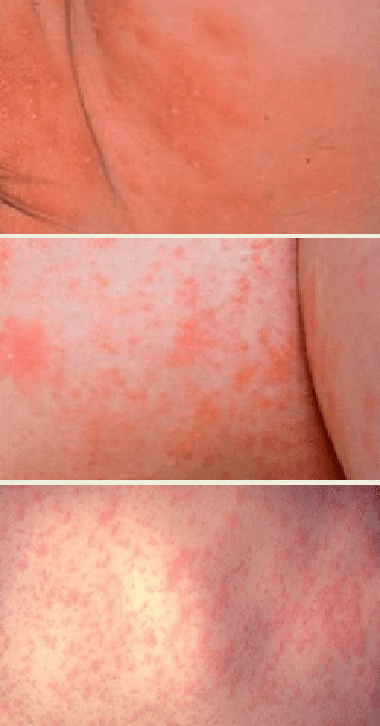Dermatology >>>> How to treat prickly heat?
How to treat prickly heat?

Prickly heat belongs to the category of pustular dermatoses (dermatoses, accompanied by the appearance of a scattering of small bubbles on the skin) and occurs due to the clogging of the sweat glands by dried up cells of the stratum corneum that did not have time to peel off or inflammation of the skin in the area of the mouth of the sweat gland.

The causes of prickly heat are directly related to factors that provoke increased sweating and create conditions that make it difficult for sweat to evaporate from the skin surface. Therefore, for the development of prickly heat, the following are always favorable: heat, stuffiness, high air humidity, tight clothes (including scarves, hats, sticky shorts, slimming underwear), tight bandages on the skin (including for medical purposes), tight swaddling, lack of conditions for frequent washing of the body, folds on the skin formed by excessive fat deposits, and for infants and bedridden patients - unnatural, excessively thick blankets, diapers, diapers, bandages, poor hygiene of the body surface.
Diseases accompanied by profuse sweat (profuse sweating) and fever can lead to prickly heat. Prickly heat can develop on its own or act as a symptom of certain diseases (prickly heat fever, Feer disease).
Favorite places for the development of prickly heat are the folds of the skin, the armpits, the folds of the limbs, the inguinal and intergluteal folds, under the mammary glands, the chin region and neck, behind the ears, on the back of the head, between the fingers.
Dermatology knows several varieties of prickly heat, which have some external differences in the form of rashes:
Red prickly heat - prickly heat rubra: it is characterized by inflamed nodules on the skin of a red color with a bubble in the middle. At the beginning of the rash, the bubbles are transparent, but they quickly become cloudy and look like small pustules. The rash is accompanied by severe itching, if located in the folds of the skin, self-resolving within a week, followed by slight peeling. Red prickly heat resembles a rash with scarlet fever.
White prickly heat - prickly heat alba: it is characterized by white bubbles filled with leukocytes. Prickly heat rubra is essentially the second stage of development. For red and white prickly heat, mottling on the skin of a pinkish-red color is characteristic.
Crystalline prickly heat - prickly heat crystalline and its varieties prickly heat pectoralis, prickly heat cardiac: associated with the formation of light transparent bubbles, sometimes not protruding above the surface of the skin, but located at the mouth of the sweat gland ducts. Prickly heat crystalline is often associated with small retention cysts. It is this form of prickly heat that depends entirely on the clogging of the pores of the sweat glands, while the two above-described forms of prickly heat are characterized by skin maceration (swelling) near the mouth of the sweat gland due to prolonged contact of epidermal cells with sweat drops.
Yellow prickly heat - prickly heat flava: it is characterized by pustules (bubbles) of yellow color. This form of prickly heat turns into periporit (pseudofurunculosis) - a purulent inflammation of the eccrine sweat glands, the causative agent of which is staphylococcus bacteria.
Prickly heat can initiate the development of pyoderma, therefore, it depends on how quickly it is possible to get rid of it and prevent the next occurrence, whether other dermatological diseases will develop.
Treatment of prickly heat is based on the use of hypoallergenic powders (talcum powder, zinc oxide, sulfonamide, biomycin powder with talcum powder), talkers, weak antiseptic solutions (potassium permanganate, furacilin, chlorophyllipt), 0.5% aqueous solution of lead acetate, 2% boron solution ointments and creams with antiseptic (tetracycline, biomycin), zinc paste. Yellow prickly heat requires close medical supervision and antimicrobial therapy.
In the treatment of prickly heat, regular baths with infusions of plants with antiseptic and astringent effects (for example, string, chamomile, oak bark, etc.), careful hygiene of the skin, especially in problem areas, and frequent bathing are recommended. Children and bedridden patients need regular change of diapers, sheets, diapers, underwear.
The procedure for treating skin with prickly heat:
- A bath or shower to wash off sweat and accumulated microparticles of dirt (for bedridden patients, frequent wiping or washing of the skin with napkins or a sponge moistened with water is required);
- Antiseptic baths or lotions;
- Dry wiped and dried skin;
- Rubbing with antiseptic solutions;
- Dried skin without rubbing;
- Applying ointment or talkers;
- The ointment should be absorbed (the excess is removed), and the talker should dry;
- Powder of problem areas is the final stage (it can also be carried out as an independent procedure in order to prevent prickly heat).
Underwear and bedding should be chosen only natural fabrics, and not mixed or synthetic fibers. It absorbs sweat better and allows air to pass through. Clothes (including for sleeping) should be loose-fitting. Excessive wrapping or clothing that is not suitable for the weather should be avoided. The room in which a person suffering from prickly heat is located should be regularly ventilated and have a comfortable air temperature so that a stuffy atmosphere that provokes sweating is not created.

Read

Read



























